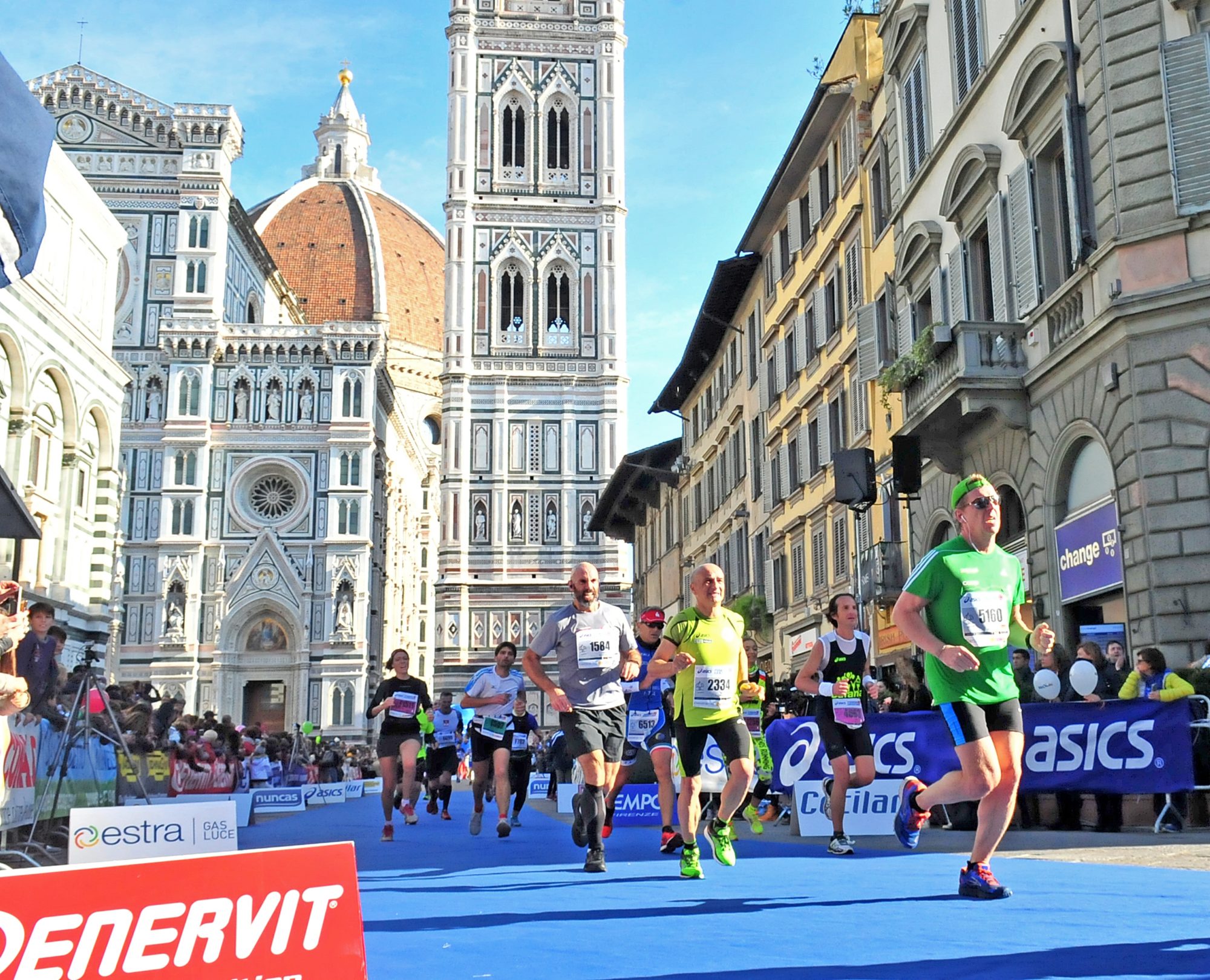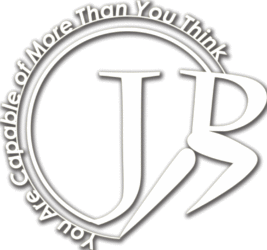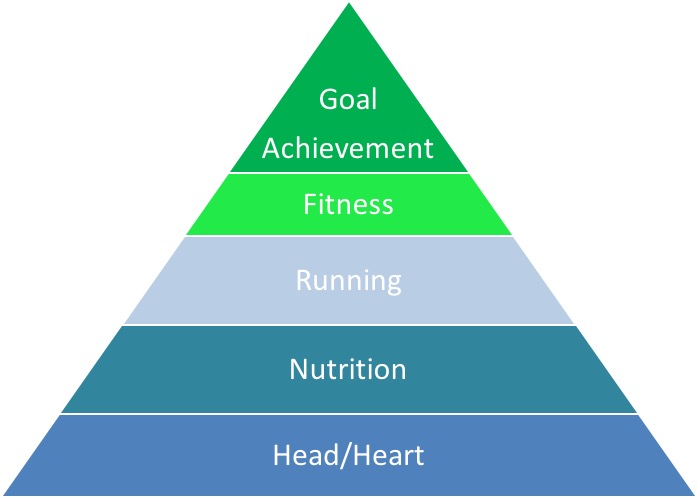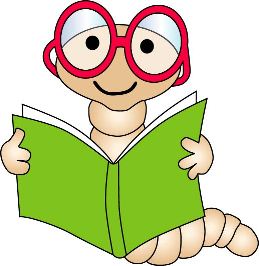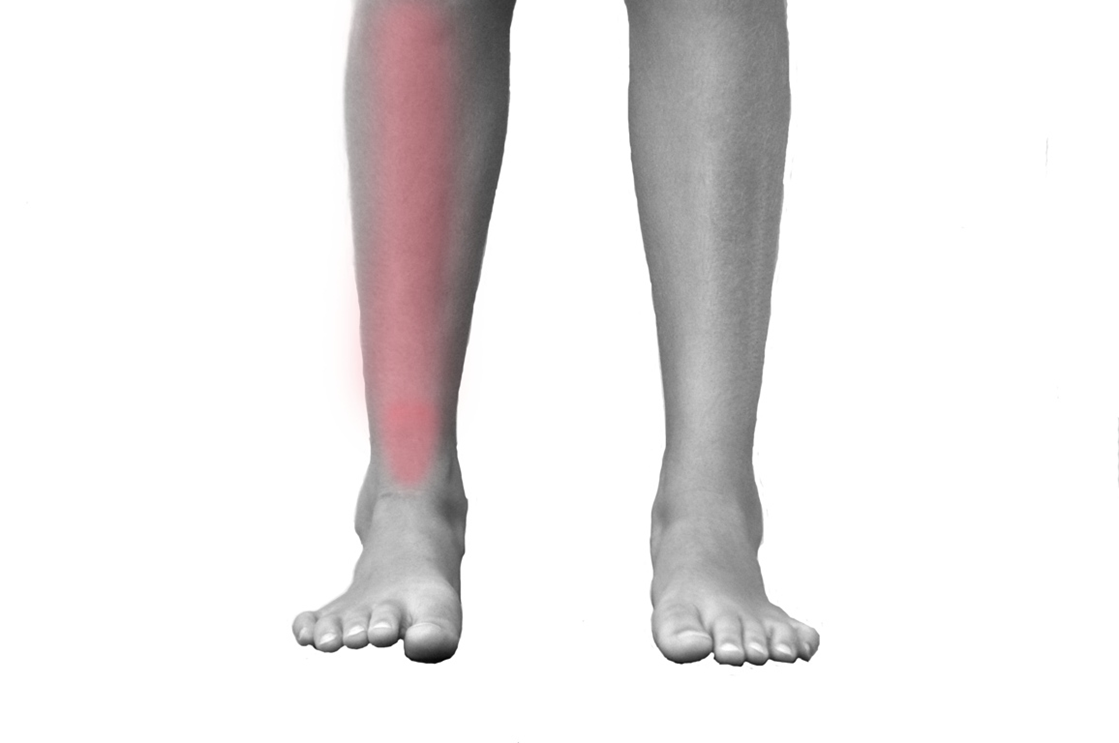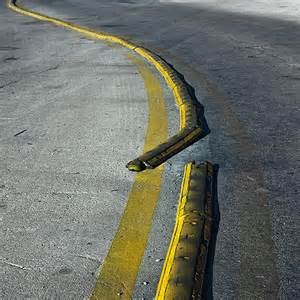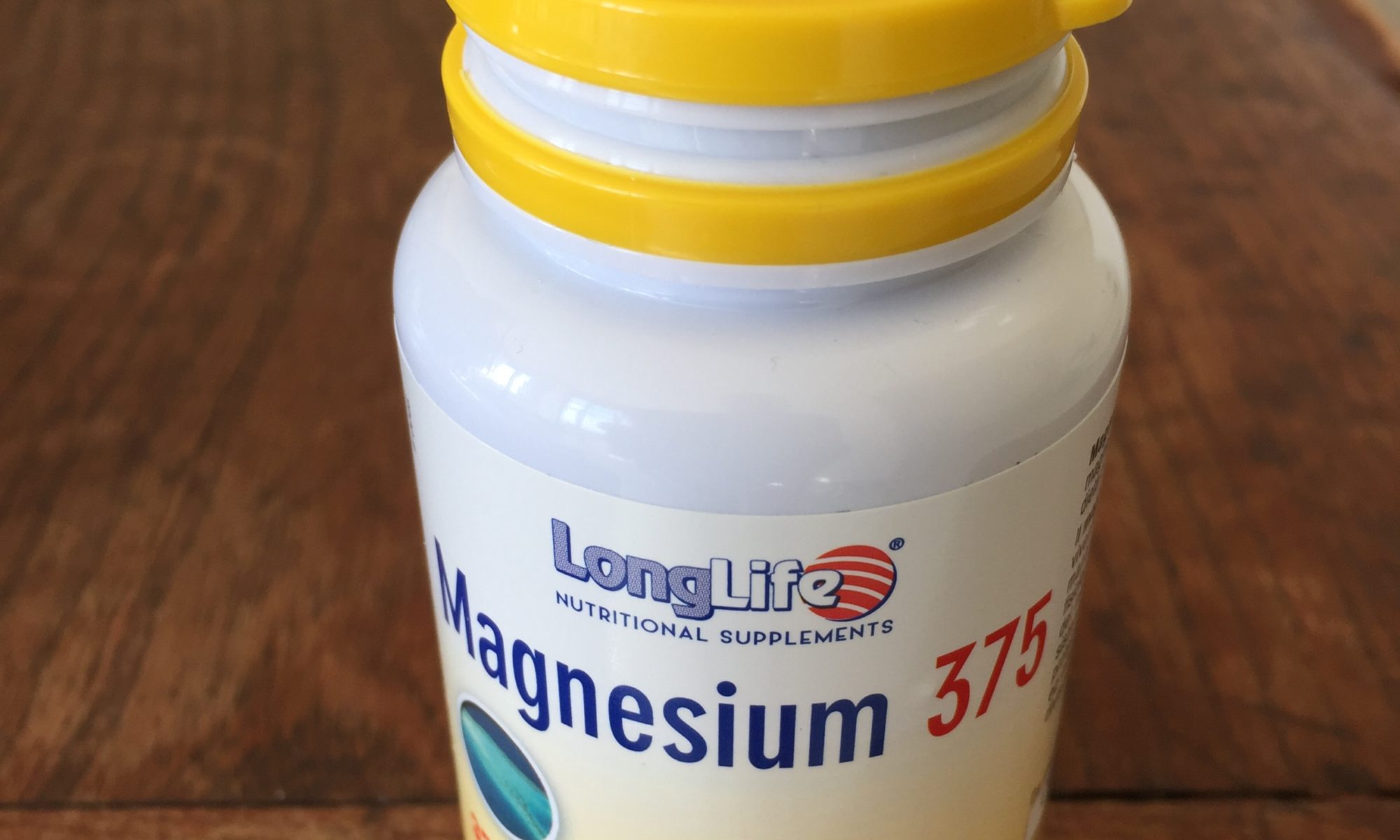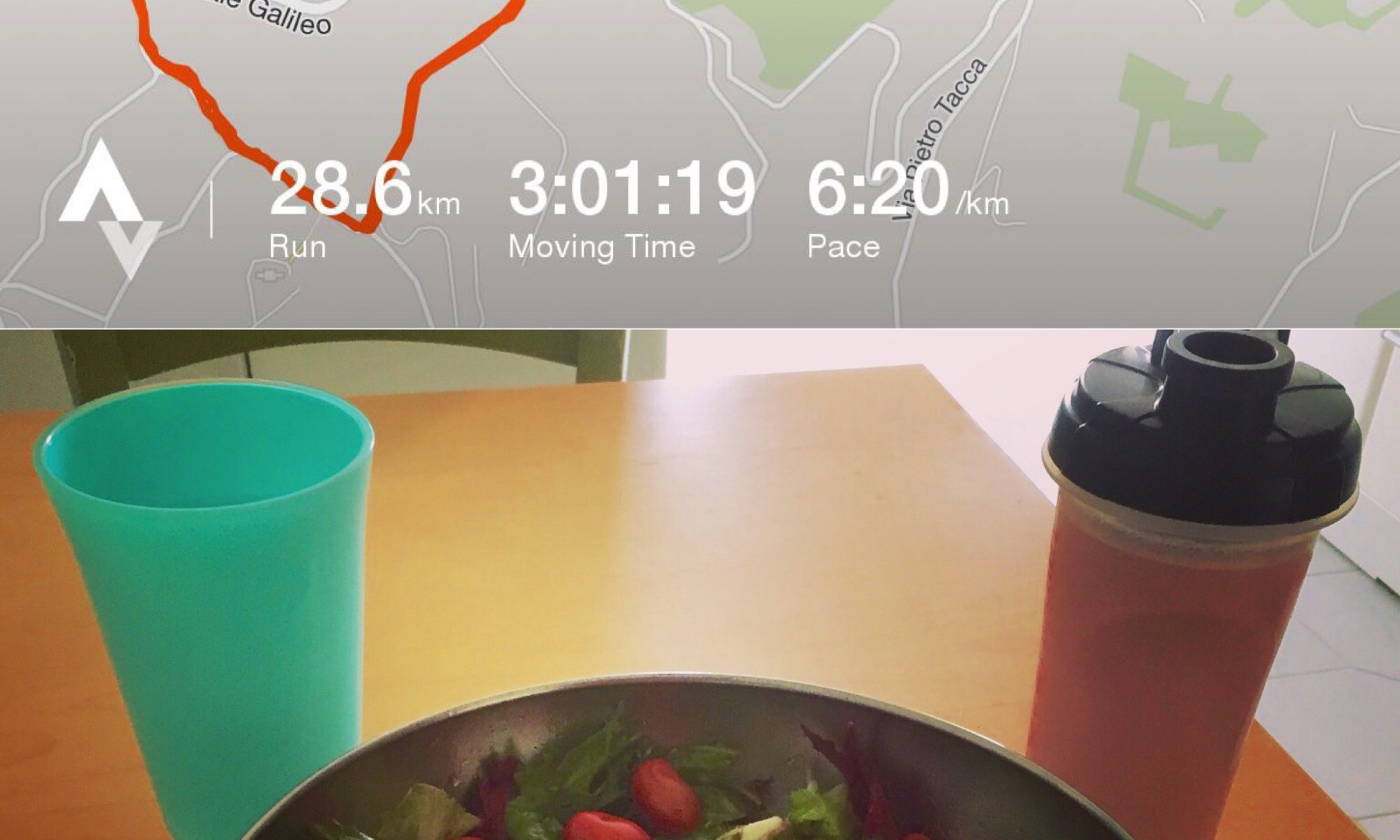Long Run Preparation VLOG-1
10 Great Running Books
I broke this list in to 3 categories. Instructional, motivational/stories, and fiction. The first category will be technical information on things like running form, nutrition, training plans, race plans, gear review, etc. The second category will be true stories that are both informational and inspiring. Some of the books in this category outline a particular athlete’s story and includes information about running, while others are more of a true story where running is involved, but may not be the focus. Finally, I threw one classic running fictional book out there that I believe most runners will really enjoy. All of these books are well loved by me, and have helped me along my running journey. So, without further ado, and with a nod to Nicole M. for the idea, here are 10 great running books and an extra…
Instructional
Chi Running: A Revolutionary Approach to Effortless, Injury Free Running – Danny & Katherine Dreyer
This is without a doubt, my favorite book on running form. In my opinion, a must read for distance runners.
The New Rules of Marathon and Half-Marathon Nutrition – Matt Fitzgerald
My favorite book on nutrition because Matt breaks it down in a simple way and discusses food as fuel. He also explains the concept of caloric density of food, which for me was a real eye opener in regard to eating and not being hungry.
Daniel’s Running Formula – Jack Daniel
This is the bible of training and training plans from one of the world’s best running coaches. Be warned, there are complete sections of this book that get very technical and may not be of use for the casual runner, but if you are trying to improve your times, this is the book. Jack discusses races all the way up to marathon distance.
Running Your First Ultra – Krissy Moehl
A very good book for those thinking about moving up to Ultra distances. Krissy discusses everything from training, nutrition, gear, race day, etc. She even has a chapter specific to women and their specific needs. I loved this book as I prepared my first ultra because it gave me one source for all of my needs.
Motivational/Stories
To Be a Runner – Martin Dugard
Matt shares stories of the various crazy races that he has done throughout his career, and touches upon so many things that every runner can relate to, in regard to what it means to be a runner. How being a runner changes the way that we live life.
Ultramarathon Man: Confessions of an All-Night Runner – Dean Karnazes
This is the autobiography of one of the craziest distance runners alive! If you are thinking of running ultras and want a fun filled motivational story, read this book about Dean Karnazes’ life.
Eat and Run: My Unlikely Journey to Ultramarathon Greatness – Scott Jurek
Another one of my heroes who wrote an autobiography. Again, this is a great book to get your juices flowing if you are thinking of running an ultra! Even if you’re not, there are some great stories here.
Born to Run – Christopher McDougall
A great inspirational book filled with all sorts of characters and stories, culminating in the “Greatest Race the World Has Never Seen” I couldn’t put this down because it was such a fun read. Caballo Blanco… that’s all I’m saying.
Natural Born Heroes – Christopher McDougall
Chris is a master story teller, and this is a follow up to Born to Run, where he tells the story of Greek resistance fighters on the island of Crete during WWII, and how they used endurance athleticism to outwit the German army.
The Long Run – Matt Long with Charles Butler
This is an amazing story of a New York City firefighter who was hit by a bus and critically wounded, and how he coped with going from an extremely fit person to someone who had to overcome severe injuries and ultimately run the New York City Marathon. Truly an inspirational story!
Fiction
Once a Runner – John L. Parker
This is a completely fictional story about competitive collegiate running that was written in 1978. Although it is fiction, give it a read if you’re a runner, because you will relate to so much of what the book is about. Plus, it’s a love story, war story, and human story. It truly is a classic.
There it is, my list of 10 plus one extra! I would love to know what you think of the books, or any that you feel I missed. Leave it in the comments below!
I hope that this post and this blog helps you achieve your dreams! To receive new post notifications, newsletters, and post previews, please SUBSCRIBE!
For behind the scenes photos and comments on my training and personal life, follow me on Instagram: joe_the_runner Strava: Joe Randene
Questions, comments, feedback? Please leave them in the comments section BELOW and we can have a discussion!
Ouch! How to Stop Shin Splints
When I started running, I had shin splints so badly that I wanted to give up. It hurt to walk, it hurt if I touched them, it hurt to run, it HURT! I was at my wits end. Then a buddy of mine made 3 suggestions that changed my running life forever.
- Get fitted and choose the correct running shoes and inserts.
- Make sure that your hydration is good and use a magnesium supplement.
- Try compression socks.
That was it. I did these three things and my shin splints went away, never to return. Why did this work? Well, shin splints are caused from one of two things, either the muscles in the lower legs being strained and pulled away from the bone, or stress fractures. If you have stress fractures, you need to see a doctor and rest so that they heal, but if it is the muscle, the above will normally help a great deal.
The correct shoes and inserts will greatly reduce stress on the lower leg muscles, and the compression socks will provide support. Magnesium is required for normal bone structure in the body which helps again with the strain on the muscles being pulled from the bone. As runners, we need more magnesium then the average bear!
So, if you are having pain due to shin splints, rest and apply ice to get the inflammation and pain down to a manageable level. Do the three things listed above, and then slowly get back in to your running and increase your weekly mileage slowly. If the pain persists, stop running and go to your doctor immediately.
I would love to know if this helped you, so please leave comments below!
Disclaimer time: I am not a physician, BUT I am somebody who lost 130 pounds, and has run over 900 pain free miles in 2017, so what do you have to lose?
I hope that this post and this blog helps you achieve your dreams! To receive new post notifications, newsletters, and post previews, please SUBSCRIBE!
For behind the scenes photos and comments on my training and personal life, follow me on Instagram: joe_the_runner Strava: Joe Randene
Questions, comments, feedback? Please leave them in the comments section BELOW and we can have a discussion!
Nutrition for the 100000 Step Project
3 Major Fitness Interrupters
THE Magic Bullet for Leg Cramps
Even before I started running, I’ve always had issues with cramps, particularly in my calves, hamstrings, and quads. I have very muscular legs and it has just always been an issue. There have been many nights where I wake up screaming in pain because of a leg cramp, scaring the crap out of my wife and obviously disturbing our rest.
When I was preparing for my first half marathon, a friend that I work with who is also a runner and has a lot more experience then I do, offered me some advice on preventing cramps. He knew that I was suffering later in my long runs and he also had similar issues. His advice was to start taking a magnesium supplement. A running friend of his offered him the same advice, and he told me that for all intents and purposes, his cramping issues had been resolved.
If you have cramp issues like I do, then you know you’re willing to try anything. I consulted the pharmacist and they started me out with 200 mg’s of magnesium a day and it made a world of difference! I was amazed. Almost immediately my cramping issues improved. Since I am always increasing my distance, I needed to keep tweaking the dosage until I found the right amount that basically stopped my cramping issues altogether. For me, that is 375 mg’s every day. Basically up to marathon distance, I no longer have cramping issues! Past 26 miles, I am still experimenting with doses, but give it a try.
If I am having a big week of training, I might supplement the 375 mg’s with another 50 to 100 mg’s or try increasing my food intake with magnesium rich foods. Foods that have worked well for me are dark green leafy vegetables, dates, figs, nuts and seeds, and bananas; if you google magnesium rich foods, there are a ton of suggestions.
Other fundamental nutritional aspects that you need to make sure you are taking care of in order for the magnesium to help are hydration and sleep. If you stay properly hydrated by drinking plenty of water and make sure that you are getting plenty of sleep, I suggest at least 7 hours per night if you can get it, then the magnesium can do its job. A thumb rule in regards to how much water to drink is that the color of your urine should be like pale wheat. Darker then that and you are dehydrated and lighter then that and you are drinking too much water.
A couple of other things that have helped me are foam rolling and compression socks. I try and get two sessions a week on the foam roller for my legs and I wear compression socks during my runs and for 30 minutes to an hour after. I am no doctor, so what I’ll say about the compression socks is that I feel supported and I feel like they make a difference. And like so many things in our sport, sometimes it really comes down to if you think it helps; then it helps.
If you increase your magnesium and it solves your cramping issues, I would love to hear about it! Post it in the comments section below!
I hope that this post and this blog helps! To receive new post notifications, newsletters, and post previews, please SUBSCRIBE!
For behind the scenes photos and comments on my training and personal life, follow me on Instagram: joe_the_runner Strava: Joe Randene
Questions, comments, feedback? Please leave them in the comments section BELOW and we can have a discussion!
Handy Little Hydration and Calorie Guidlines by Distance
As requested, here are my guidelines to hydration and calories by distance. First I’ll start with an explanation for each distance, and then you will see a handy little chart that I created. Before we start, disclaimer time: I am not a physician, I am a runner. This information is based on my experience and research that I have done for my own performance. Please be sure to remember that these are guidelines, and that you will have to experiment to see what works best for you! I do believe that this is a good place to start in regards to working on your own plan. Ok, that’s out of the way!
0 – 12 KM or 0 – 7.4 Miles
When you are a brand new runner, it’s probably a good idea to have some water, Gatorade, or Tailwind with you until you can run 5k comfortably. But once you become more advanced, I have found that I do not need any type of hydration or calories at this distance. If it is a hot day, let’s say above 70 degrees, I may decide to take some Tailwind with me as heat does change everything. But normally, I’m good at this distance just going out for a run.
12 – 15 KM or 7.4 Miles – 9.3 Miles
This is the distance where I will take along a handheld water bottle with Tailwind. Tailwind is my preference as it is has plenty of electrolytes, but a very light taste and is easy on my stomach. You may prefer water or Gatorade, you’ll have to experiment. I will take a couple of mouthfuls every 5 KM’s. At this distance, my runs last 65 minutes to 90 minutes.
15 – 42 KM or 9.3 Miles – 26 Miles
Things start to get interesting here! When your runs start to approach that 90 minute to 120 minute range, you need to start thinking electrolytes and calories. If you do not take anything this is when you will start to feel the effects of dehydration and depleted glycogen levels. The dreaded bonk! For this distance I will take an SIS Isotonic Energy Gel every 5 KM’s and then a couple of gulps of Tailwind at the following KM. So it looks like this for a 20 KM run. At KM 5 gel, KM 6 Tailwind, KM 10 gel, KM 11 Tailwind, KM 15 gel, KM 16 Tailwind, KM 20 the run ends and I finish my Tailwind and then move on to recovery nutrition. You need to start taking in electrolytes early and often to avoid hitting the wall. If you don’t take in any calories or electrolytes until 10 or 15 KM’s in, you will be behind the curve. At this distance my runs last 90 minutes to 240 minutes.
Ultra Marathon Distances
The plan is the same as above except I will start to mix in real food as a substitute for the gels. So I will have gels every 5 KM and/or food. SIS GO Energy Bars are great for me, but you will have to find what works for you. Also, I have eaten dried fruit and nuts, cookies, ham and cheese wrap, bananas, salted potatoes, and anything else that strikes my fancy at aid stations. The key thing is to regularly get in the calories and the electrolytes as at distances above 26 miles, it is a must. I have been very lucky so far and I have not had any stomach issues, but it is not unusual for runners to have issues keeping calories down, and then the fun can really start. So I try to train my stomach and eat on my long runs, I suggest you do the same. I shoot for about 300 to 500 calories per hour.
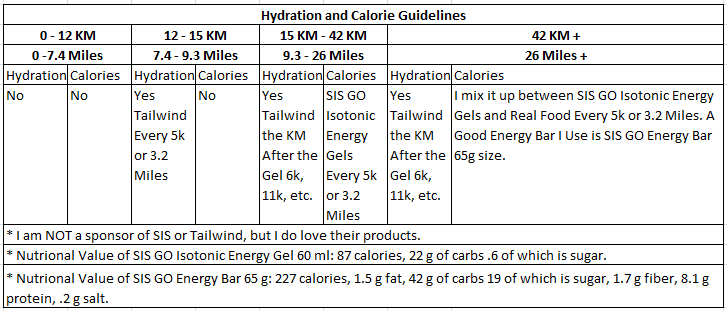
I hope that this post and this blog helps! If you have enjoyed the content please SUBSCRIBE!
For behind the scenes photos and comments on my training and personal life, follow me on Instagram: joe_the_runner
Questions, comments, feedback? Please leave them in the comments section BELOW and we can have a discussion!
3 Bullsh*t Myths Stopping Your Weight Loss
If you do not eat anything after 7pm you’ll lose weight.
I’ve heard this a thousand times, and it is simply not true! What you eat and do the rest of the day matters, there is no magic here. If you have acid reflux, this is good advice, or if you do not digest well, doing this may help you sleep better, but if all you do is stop eating at 7pm everyday without looking at your entire day of eating and activities, you will be very disappointed with the result, or lack there of.
Super foods.
This term has become all the rage recently and it is complete crap. “Kale is the new super food.” “Turmeric is the new super food.” There are foods that are good for you and there are foods that do not have a whole lot of nutritional value. Unfortunately these are the foods that usually have the most calories too! Regardless, if you were to maintain all of your unhealthy habits but eat these “super” foods, you will just gain more weight! Even “super” foods have calories. Don’t get me wrong, kale is good for you, but it is not mystical or “super”! You need a comprehensive approach to your nutrition. For a quick start read: “Lose Weight Without Being Hungry”.
My Metabolism is Slow.
If you have been diagnosed by a doctor for a condition and have been prescribed medication, you are off the hook. For the other 99.5% of us, stop lying to yourself! You do not have slow metabolism. In fact, the bigger you are, the higher your metabolism is. Coach Jose Rodriguez from APE Shape Fitness said to me during our interview “I get the genetic thing a lot. What you inherited is the lifestyle choices of your parents. Genetics does not pay as big of a role as we’d like to believe it does. Its basic physics, if you are 300 pounds it will take more energy to walk a block than someone who is 100 pounds, therefore the 300 pound person actually has a higher metabolism.”
Losing weight is very simple, NOT EASY; simple. You need to create a calorie deficit. There are two levers you can pull to do this. One is to burn more calories and the second is to eat less calories. I suggest you work them in tandem with a balanced approach. Increase your calorie burn with exercise and limit your calorie intake by eating foods that have low calorie density. We all know which foods they are: vegetables, fruits, nuts, and lean meats and fish. Coach Jose does a great job helping people with this approach and is offering a 50% discount on his introductory package for anyone who mentions my blog when they sign up for on-line coaching.
If it sounds too good to be true, it is. But you can lose weight if you make the right choices consistently. Remember, you’re not alone, we are here to help!
To see behind the scenes training photos and activities follow me on Instagram: joe_the_runner
Read Coach Jose’s incredible story: “From 120 Pounds Overweight to MMA Champion”
Thanks for reading, and if you like the content, subscribe!
Questions, comments, feedback? Please leave them in the comments box and we can have a discussion!
Lose Weight Without Being Hungry (Post 4)
Oh man. You guys are sooooo going to hate me. That’s an awfully big claim in the title right? And, if you’re like most people, you probably want to hear something profound like: “I found this diet where all you do is stop eating after 7 pm and you’ll lose weight.” Or “I lost 100 pound on the all you can eat ice cream diet!” Well, that is not how it’s done. Instead, we are going to go old school, with some new school spin on it. But, you will find out that you can lose weight without being hungry, and you will be able to sustain it.
That stuff they taught us in school all of those years ago, that’s pretty much it. Oh we’ll put a twist on it somewhat, but the fact is, “Eat your vegetables and exercise.” is a pretty damn good place to start. But that’s not life, and all vegetables and no beer makes Joe a dull boy!
Let’s start with the losing weight without being hungry part. There is this great book by Matt Fitzgerald called “The New Rules of Marathon and Half-Marathon Nutrition”. If you are a runner, this is GOLD! If you want to lose weight, ignore the running stuff and just read the nutrition stuff and this is GOLD! It’s a great book. Mark discusses a concept called calorie density, and explains that our hunger is driven by a several factors. Things like calorie intake, metabolism/calorie burn, blood sugar, and VOLUME. How much we eat matters. Obviously if you eat more you will probably be fuller, longer. Told you this wasn’t rocket science. So as an example, it takes 10 ounces of potatoes to provide 240 calories and it takes ONLY 2 ounces of a doughnut to provide the same 240 calories. Which one will curb your hunger longer?
I am not a nutritionist, so I will only briefly touch on this, but processed foods and refined sugars have a very different impact on our body then natural foods. So how your body processes a doughnut compared to an apple is very different. So do not fall in to the trap of “Well, fruits have sugars in them. So what’s the difference?” Fructose doesn’t cause the same type of sugar spike and crash that refined sugar does and therefore your appetite and energy levels will be better moderated with the apple. I try not to get cute with this stuff, simple is better. Doughnut BAD, apple GOOD.
Using the concept of calorie density then, if you were going to have a snack at night and you were targeting 240 calories, you could choose between 2 ounces of a doughnut or 3 medium sized apples. For someone who is hungry, the choice is obvious. AND, there is no nutritional value with the doughnut. There are no vitamins or nutrients, where as the apple is packed with fiber, vitamins, and nutrients. Finally, who the heck eats 2 ounces of a doughnut? You will eat… the… whole… thing, all 800 calories of it, and you’ll be hungry 30 minutes later!
You’re probably thinking “Duh Joe! That’s all great stuff that I knew anyway, but what can I do practically with it so I start to make REAL changes in my day to day life?” That my friend is a great question, so let’s tackle that next! I’m going to layout a very simple way that Mark looks at ensuring that he get’s the right mix of foods in to his body, and then I am going to discuss how I made some changes to my mentality that have driven a sustainable lifestyle change. And that is the real secret sauce. But first, I need to go get my long run in! No; really. Go check Strava (I’m: Joe Randene). It’s “Sunday Runday” so I have to go get mine!… Ok, that’s done! (2 hours later.)
Remember that stupid nutrition pyramid in high school? What Mark does is kind of like that. He calls it “The Diet Quality Continuum”. Here is how he classifies each category of food, in order of decreasing quality:
- Vegetables (including legumes)
- Fruits
- Nuts and seeds
- Fish and lean meats
- Whole grains
- Dairy products
- Refined grains
- Fatty Meats
- Sweets
- Fried foods
The first six are considered high quality and the last four are low quality. If you follow this simple rule and add a little exercise to your routine you will be well on your way to losing weight in a sustainable way without being hungry. Ready, this is earth shattering stuff. Mark’s rule is this: “Eat vegetables more often than fruits, fruits more often than nuts and seeds, fish and lean meats more often the whole grains, etc.” If you do this and stick mostly to the top six, you will lose weight and not be hungry. Why? Calorie density and no processed foods. Let’s say you burn 2000 calories per day (you need to exercise some to do this), and you want to eat only 1500 so that you create a deficit and start to lose weight. You can eat allot more volume of the first six categories to fill yourself up, and then you can the bottom four. Your typical value meal from a burger joint with a coke can easily exceed 2000 calories. Ouch! Also, with no processed foods and refined sugars, your body processes these first six categories without creating the sugar spikes and the ensuing cravings.
I’m going to give you two practical methods to use this information to lose weight. One we’ll call kind of high tech, and the other you just need paper and a scale. For people who like some technology and apps in their life, this is what I do. I have a Fitbit that tracks how many calories that I burn everyday and on the app, I can log all of the food that I eat. The app is cool because it has a library of foods and their caloric composition by weight. Now, I am NOT that person who whips out a food scale, I don’t want or need to be that accurate, so I just guess. Close enough is good enough for me. The app also will tell you for most brands of food at the grocery store and most restaurants what the calories are, it really is pretty cool. So now I know how many calories I’m burning and how many I’m putting in. I set the goal for a 500 calorie deficit so I have some wiggle room, and I am in maintain mode! Want to lose some weight change the deficit goal. Dead easy.
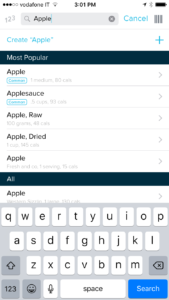
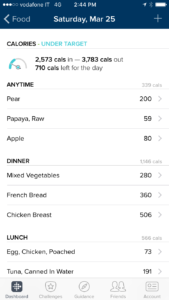
For those of you who are not inclined to use technology for everything, here is the piece of paper and a scale method. Log everything that you eat each day and try to stay to the top six categories, and weigh yourself once per week. Here is an example of my day whether I am using the app or a piece of paper:
Breakfast: 3 bananas, 1 cup yogurt
Mid morning snack: 1 cup nuts and dried fruit
Lunch: Big bowl of mixed salad with one can of tuna
Mid afternoon snack: 5 dates
Dinner: 1 chicken breast, 1 cup brown rice, 2 cups vegetables
Snack: 1 apple, 2 pears
If you are still gaining weight or maintaining it each week, simply start to cut back on the portions or increase your physical activity. Remember, you have two levers to pull! And because you are measuring your food, you can simply cut back. Instead of 3 bananas, eat 2, instead of 1 cup of nuts and dried fruit, go to a half. You get the idea.
Here’s the secret sauce (low calorie of course). For me, having races that I was signed up for and I had to train for, changed completely the way that I looked at food. I now had to fuel my runs and avoid cramping and joint pain. I needed things like magnesium and potassium that you won’t get from cheese burgers and chips. I knew that for me to do the things that I wanted to do, I had to eat the foods that would get me there. You need to find your reason. What is going to make you eat and become healthier?
If you need some time to find your reason, I’ll share something that retired U.S. Navy SEAL Jocko Willink said. This guy is a 100% certified BADASS. “It’s possible to immediately be tougher starting with your next decision. Having trouble saying “no” to dessert? Be tougher. Make that your starting decision. Feeling winded? Take the stairs anyway. Ditto. It doesn’t matter how small or big you start. If you want to be tougher, be tougher.” http://jockopodcast2.com/
Something else interesting happened along the way, I had forgotten how good fresh strawberries tasted, and that sweet potatoes with just a little cinnamon and no butter are delicious! I found new treats. Freeze banana slices and then blend them in to ice cream, amazing on a summer day.
Last but not least, be kind to yourself and reward yourself. After a race, I am off the bandwagon for a couple of days at least. Pizza, yep! Beer, oh yeah! I just don’t let a cheat day here or there turn in to a cheat week or month. I always have the next race that I sign up for, to keep that momentum going. You will slip up, and that’s ok, just put your head down and get back to it! Good luck and please share with me any of your success stories as I am sure they will inspire me and the rest of the readers as we continue on this journey!
Questions, comments, feedback? Please leave them in the comments box and we can have a discussion!
